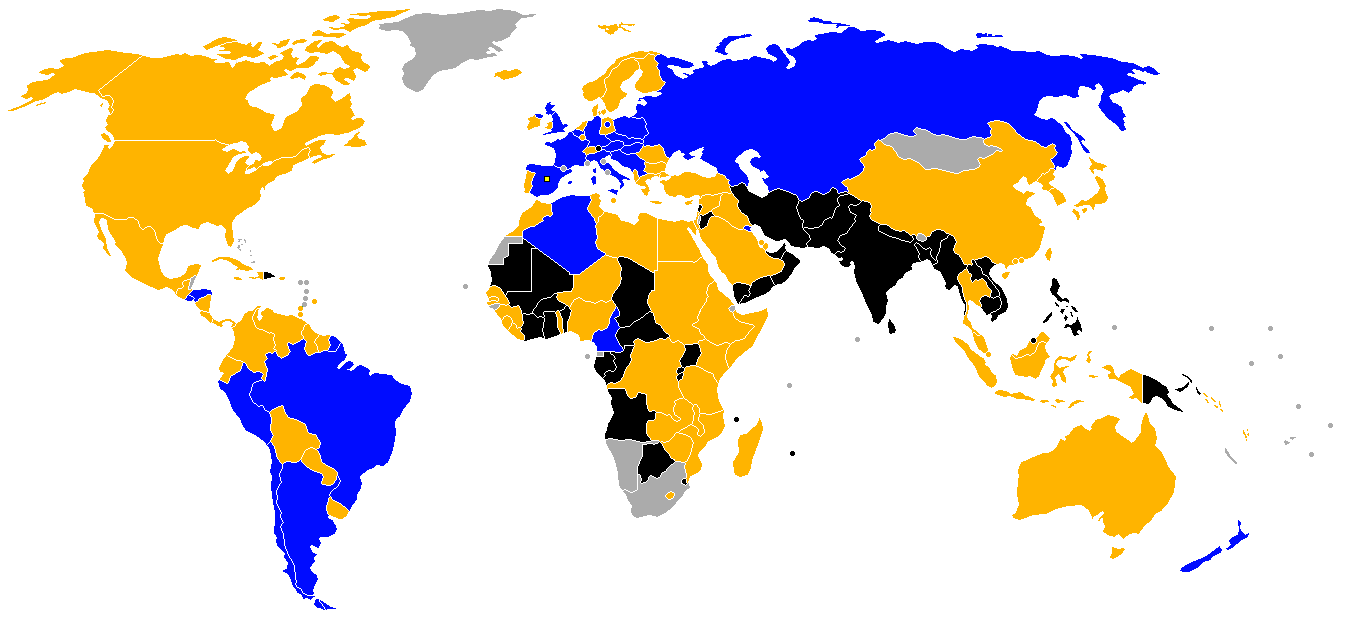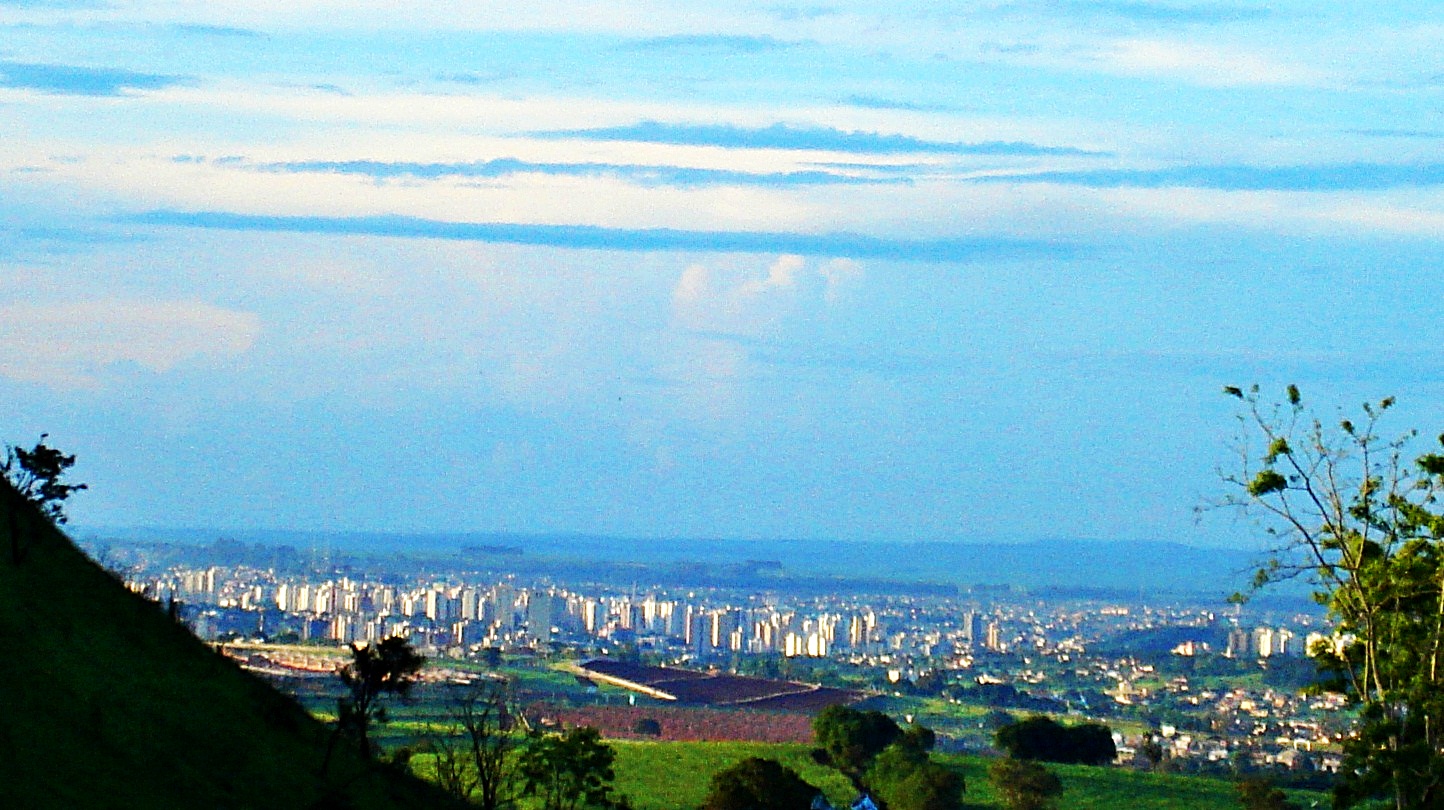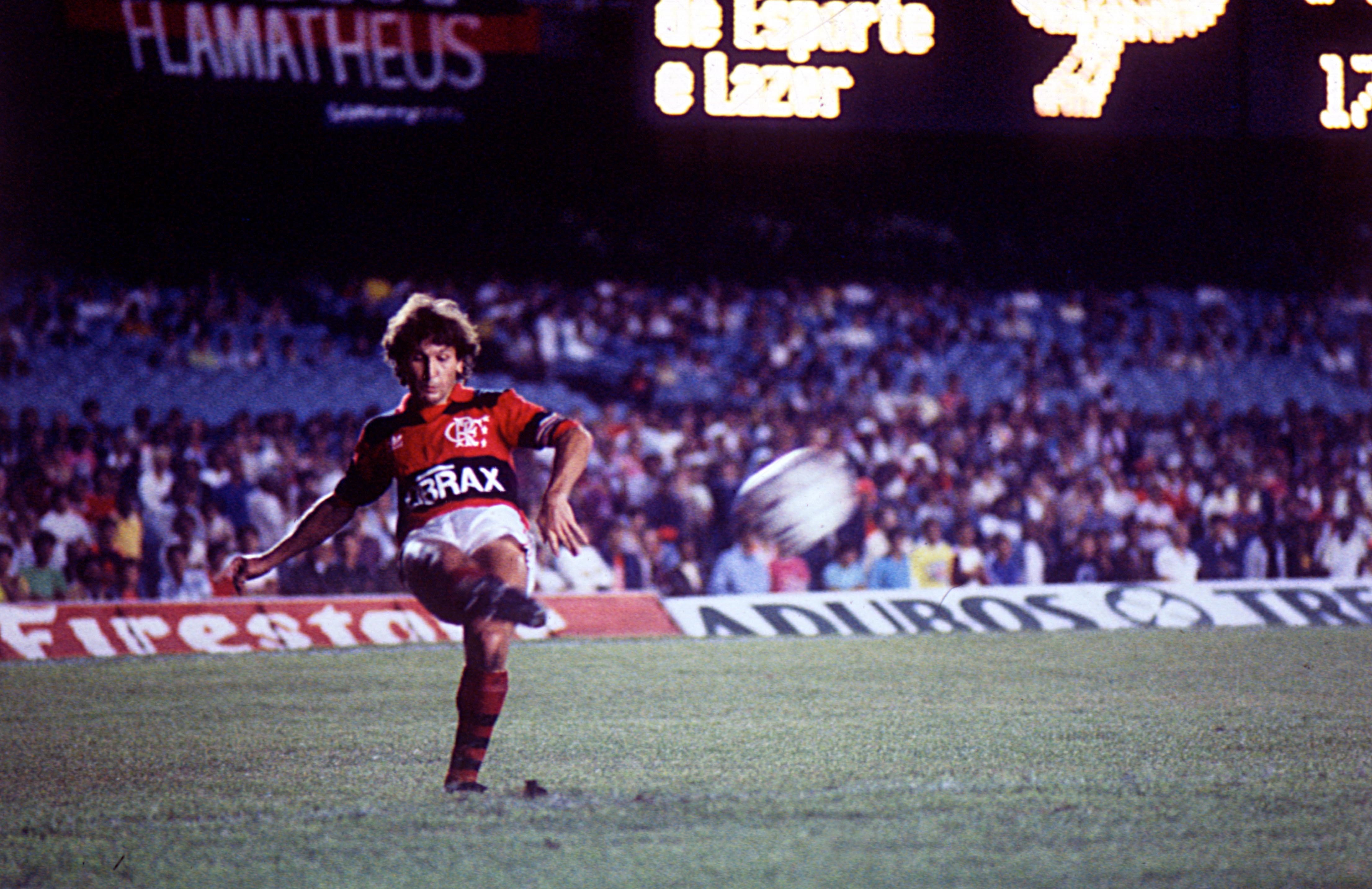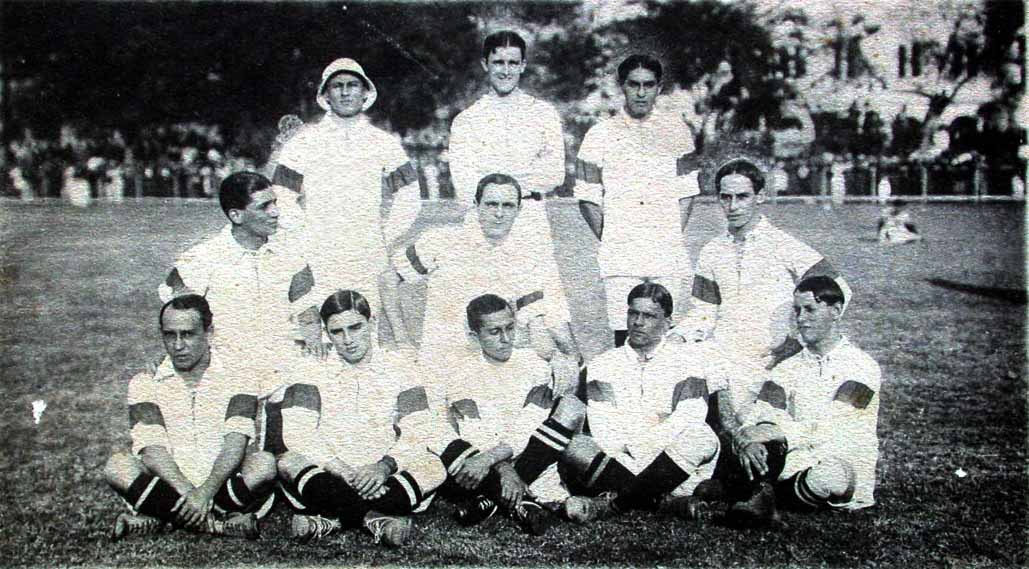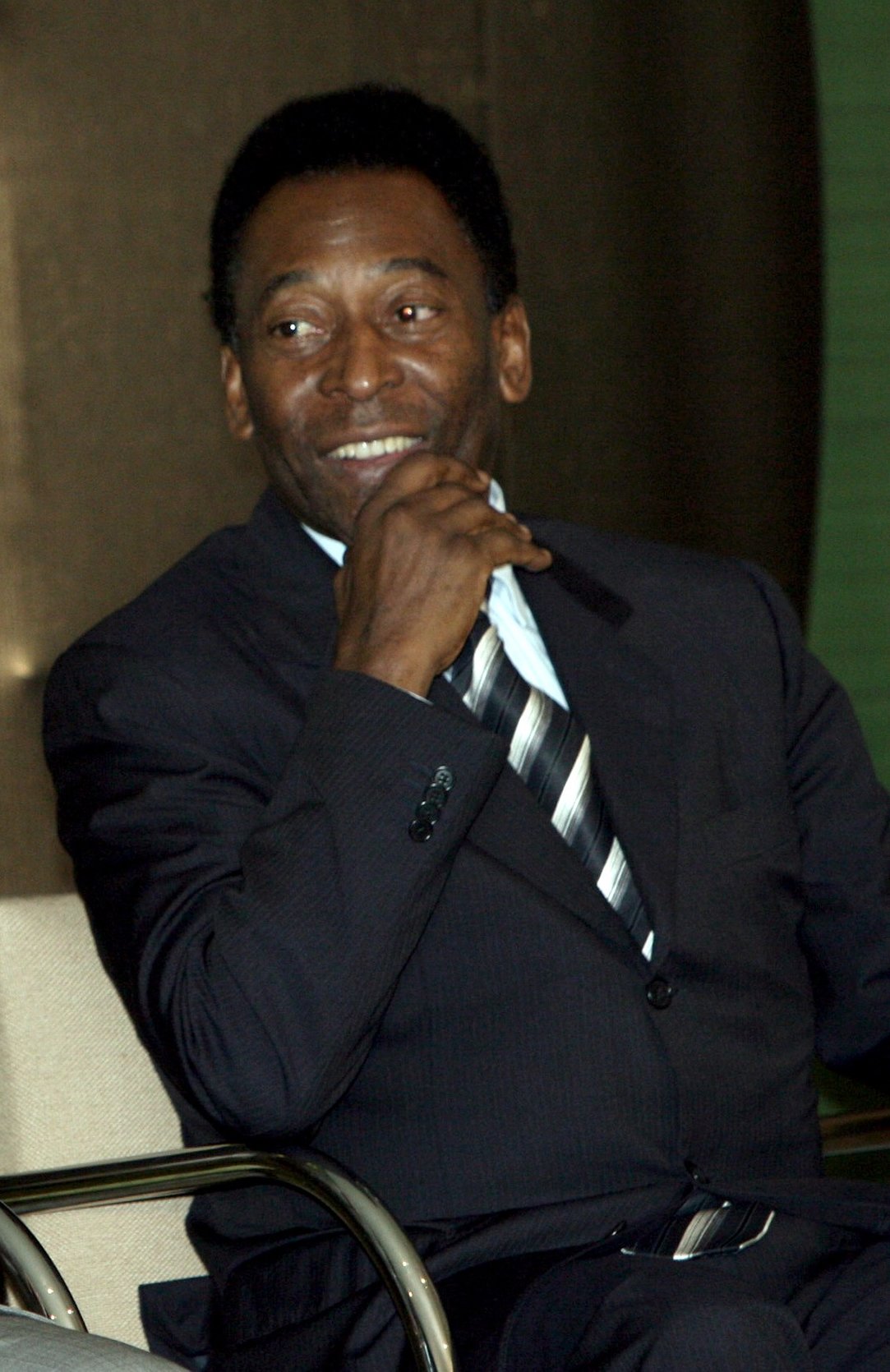|
Sócrates
Sócrates Brasileiro Sampaio de Souza Vieira de Oliveira (19 February 1954 – 4 December 2011), simply known as Sócrates, was a Brazilian footballer who played as a midfielder. His medical degree and his political awareness, combined with style and quality of his play, earned him the nickname "Doctor Socrates". Easily recognizable for his beard and headband, Sócrates became the "symbol of cool for a whole generation of football supporters". He is considered to be one of the greatest midfielders of his generation. In 1983, he was named South American Footballer of the Year. In 2004, he was named by Pelé in the FIFA 100 list of the world's greatest living players. Socrates played for Brazil for seven years, scoring 22 goals and representing the nation in two World Cups. He captained the team in the 1982 FIFA World Cup; playing in midfield alongside Zico, Falcão, Toninho Cerezo and Éder, considered one of the greatest Brazilian national teams ever. He also appeared in ... [...More Info...] [...Related Items...] OR: [Wikipedia] [Google] [Baidu] |
1982 FIFA World Cup
The 1982 FIFA World Cup was the 12th FIFA World Cup, a quadrennial football tournament for men's senior national teams, and was played in Spain between 13 June and 11 July 1982. The tournament was won by Italy, who defeated West Germany 3–1 in the final, held in the Santiago Bernabéu Stadium in the capital, Madrid. It was Italy's third World Cup title, but their first since 1938. The defending champions, Argentina, were eliminated in the second round (finishing third and last in their group). Algeria, Cameroon, Honduras, Kuwait and New Zealand made their first appearances in the finals. The tournament featured the first penalty shoot-out in World Cup competition. This was the last World Cup to feature two rounds of group stages. It was also the third time (after 1934 and 1966) in which all four semi-finalists were European. In the first round of Group 3, Hungary defeated El Salvador 10–1, equalling the largest margin of victory recorded in the finals (Hungary over South ... [...More Info...] [...Related Items...] OR: [Wikipedia] [Google] [Baidu] |
1979 Copa América
The 1979 edition of the Copa América association football tournament was played between 18 July and 12 December. It was not held in a particular country, all matches were played on a home and away basis. Defending champions Peru were given a bye into the semi-finals. Squads Group stage The teams were drawn into three groups, consisting of three teams each. Each team played twice (home and away) against the other teams in their group, with two points for a win, one point for a draw, nil points for a loss. The winner of each group advanced to the semi-finals. ---- ''Peru qualified automatically as holders for the semifinal.'' ---- Group A ---- ---- ---- ---- ---- Group B ---- ---- ---- ---- ---- Group C ---- ---- ---- ---- ---- Knockout stage Semi-finals ''Chile won 3–1 on points.'' ---- ''Paraguay won 3–1 on points''. Finals ''2–2 on points. A play-off was played on a neutral ground to determine the winner.'' ''As the play-off finis ... [...More Info...] [...Related Items...] OR: [Wikipedia] [Google] [Baidu] |
South American Footballer Of The Year
The Rey del Fútbol de América ("King of Football of America"), often referred to as the South American Footballer of the Year, is an annual association football award presented to the best footballer in South America over the previous calendar year. The award was conceived by Venezuelan newspaper '' El Mundo'', which awarded it from 1971 to 1992. Uruguayan newspaper ''El País'' took over from 1986 onwards, and their award was considered official, but '' El Mundo'' continued their award until 1992. Originally for the '' El Mundo'' award, journalists could vote for any South American and Central American players at any club around the world. From 1986 the ''El País'' award became official and only South American players playing in South America were eligible. From 1998, eligibility extended to South Americans playing in Mexico due to the participation of Mexican clubs in the Copa Libertadores. From 1980 to 1983 the Argentinian newspaper '' El Gráfico'' also chose their El Fut ... [...More Info...] [...Related Items...] OR: [Wikipedia] [Google] [Baidu] |
Ribeirão Preto
Ribeirão Preto (Portuguese pronunciation: �ibejˈɾɐ̃w ˈpɾetu is a municipality and a metropolitan area located in the northeastern region of São Paulo state, Brazil. Ribeirão Preto is the eighth-largest municipality in the State with . It has an estimated population of 720,216 in 2021 and a metropolitan area of 1,178,910. It is located from the city of São Paulo and from Brasília, the federal capital. Its mean altitude is high. The city's average temperature throughout the year is , and the original predominant vegetation is the Atlantic forest. The city originated around 1856 as an agricultural region. Coffee was a primary income source until 1929 when it lost value compared with the industrial sector. In the second half of the 20th century, investment in health, biotechnology, bioenergy, and information technology led to the city being declared a Technological Center in 2010. These activities have caused the city to have the 30th biggest gross national (GNP) ... [...More Info...] [...Related Items...] OR: [Wikipedia] [Google] [Baidu] |
Sport Club Corinthians Paulista
Sport Club Corinthians Paulista () is a Brazilian sports club based in the Tatuapé district of São Paulo. Although competing in a number of different sports, Corinthians is mostly known for its professional association football team that plays in the Campeonato Brasileiro Série A, the top tier of the Brazilian football, as well as in the Campeonato Paulista Série A1, the first division of the traditional in-state competition. Founded in 1910 by five railway workers inspired by the London-based Corinthian Football Club, Corinthians has become one of the most successful Brazilian clubs, having won the national title seven times, in addition to three Copa do Brasil trophies, one Supercopa do Brasil and a record 30 São Paulo State championships. On the international stage, the club won the inaugural FIFA Club World Championship in 2000, winning it for the second time in 2012 after being crowned Copa Libertadores de América champions for the first time that same year. ... [...More Info...] [...Related Items...] OR: [Wikipedia] [Google] [Baidu] |
Paulo Roberto Falcão
Paulo Roberto Falcão, or simply Falcão (; born 16 October 1953), is a Brazilian former footballer and football manager. He is the current sporting coordinator of Santos. Falcão is widely considered one of the best players in Internacional and Roma history, playing also for São Paulo. He is universally considered one of the greatest Brazilian players of all time, especially at his peak in the 1980s. At one stage, he was the world's highest paid footballer. Due to his success and performances with Roma, Falcão earned the nickname "the eighth King of Rome" from the fans, like Amedeo Amadei before him, and was inducted into the club's Hall of Fame in 2013. For the Brazil national team, Falcão was capped 34 times between February 1976 and June 1986. He appeared at the 1982 FIFA World Cup, playing in midfield alongside Zico, Sócrates and Éder, considered one of the greatest Brazilian national teams ever. He was named by Pelé one of the 125 Greatest Living Footballers a ... [...More Info...] [...Related Items...] OR: [Wikipedia] [Google] [Baidu] |
Zico (footballer)
Arthur Antunes Coimbra (, born 3 March 1953), better known as Zico (), is a Brazilian football coach and former player who played as an attacking midfielder. Often called the "White Pelé", he was a creative playmaker, with excellent technical skills, vision and an eye for goal, who is considered one of the most clinical finishers and best passers ever, as well as one of the greatest players of all time. He is also widely regarded as the greatest Brazilian to never win the World Cup. One of the world's best players of the late 1970s and early 1980s, he is regarded as one of the best playmakers and free kick specialists in history, able to bend the ball in all directions."Kings of the free-kick" FIFA. Retrieved 22 August 2014 As stated ... [...More Info...] [...Related Items...] OR: [Wikipedia] [Google] [Baidu] |
Brazil National Football Team
The Brazil national football team ( pt, Seleção Brasileira de Futebol), nicknamed ''Seleção Canarinho'' (‘Canary Squad’, after their bright yellow jersey), represents Brazil in men's international football and is administered by the Brazilian Football Confederation (CBF), the governing body for football in Brazil. They have been a member of FIFA since 1923 and a member of CONMEBOL since 1916. Brazil is the most successful national team in the FIFA World Cup, being crowned winner five times: 1958, 1962, 1970, 1994 and 2002. The ''Seleção'' also has the best overall performance in the World Cup competition, both in proportional and absolute terms, with a record of 76 victories in 114 matches played, 129 goal difference, 247 points, and 19 losses. It is the only national team to have played in all World Cup editions without any absence nor need for playoffs, and the only team to have won the World Cup in four different continents: once in Europe ( 1958 Sweden), ... [...More Info...] [...Related Items...] OR: [Wikipedia] [Google] [Baidu] |
Midfielder
A midfielder is an outfield position in association football. Midfielders may play an exclusively defensive role, breaking up attacks, and are in that case known as defensive midfielders. As central midfielders often go across boundaries, with mobility and passing ability, they are often referred to as deep-lying midfielders, play-makers, box-to-box midfielders, or holding midfielders. There are also attacking midfielders with limited defensive assignments. The size of midfield units on a team and their assigned roles depend on what formation is used; the unit of these players on the pitch is commonly referred to as the midfield. Its name derives from the fact that midfield units typically make up the in-between units to the defensive units and forward units of a formation. Managers frequently assign one or more midfielders to disrupt the opposing team's attacks, while others may be tasked with creating goals, or have equal responsibilities between attack and defenc ... [...More Info...] [...Related Items...] OR: [Wikipedia] [Google] [Baidu] |
Belém Do Pará, Brazil
Belém (; Portuguese for Bethlehem; initially called Nossa Senhora de Belém do Grão-Pará, in English Our Lady of Bethlehem of Great Pará) often called Belém of Pará, is a Brazilian city, capital and largest city of the state of Pará in the country's north. It is the gateway to the Amazon River with a busy port, airport, and bus/coach station. Belém lies approximately 100 km upriver from the Atlantic Ocean, on the Pará River, which is part of the greater Amazon River system, separated from the larger part of the Amazon delta by ''Ilha de Marajó'' ( Marajo Island). With an estimated population of 1,499,641 people — or 2,491,052, considering its metropolitan area — it is the 11th most populous city in Brazil, as well as the 16th by economic relevance. It is the second largest in the North Region, second only to Manaus, in the state of Amazonas. Founded in 1616 by the Kingdom of Portugal, Belém was the first European colony on the Amazon but did not become p ... [...More Info...] [...Related Items...] OR: [Wikipedia] [Google] [Baidu] |
Toninho Cerezo
Antônio Carlos Cerezo (born 21 April 1955), known as Toninho Cerezo (), is a Brazilian former footballer. Cerezo is commonly regarded as one of the finest Brazilian defensive midfielders of all time, most notably having played for his hometown's team Atlético Mineiro; he also played for several other clubs in both Brazil and Italy throughout his career. At international level, Cerezo took part at the 1978 and 1982 FIFA World Cups – winning a bronze medal in the former edition of the tournament – and the 1979 Copa América, where Brazil finished in third place. Club career Throughout his career, Cerezo played as a defensive midfielder with Atlético Mineiro, Roma, Cruzeiro, Sampdoria, São Paulo and the Brazilian national team. While playing in Brazil, he won the Bola de Ouro in 1977 and 1980 and the Bola de Prata in 1976. During his time in Italy, Cerezo won the Coppa Italia four times; in 1991 he won the Serie A with Sampdoria, but lost the Coppa Italia ... [...More Info...] [...Related Items...] OR: [Wikipedia] [Google] [Baidu] |
FIFA 100
The FIFA 100 is a list of Brazilian footballer Pelé's choice of the "greatest living footballers". Unveiled on 4 March 2004 at a gala ceremony in London, England, the FIFA 100 marked part of the celebrations of the 100th anniversary of the foundation of the Fédération Internationale de Football Association (FIFA), the international governing body of football. The figure 100 refers to the 100th anniversary of FIFA and not the number of players listed, which is actually 125; Pelé had been asked to select 50 active players and 50 retired players, for a total of 100 players, but found it too difficult to limit the number of former players to just 50. The list contains 123 men and two women. At the time the FIFA 100 was selected, 50 of the players were still active, with the remaining 75 retired from the game. Criticism Some football observers have questioned the selection methodology of the list. David Mellor, politician turned football pundit, wrote in his column in the ''Ev ... [...More Info...] [...Related Items...] OR: [Wikipedia] [Google] [Baidu] |
